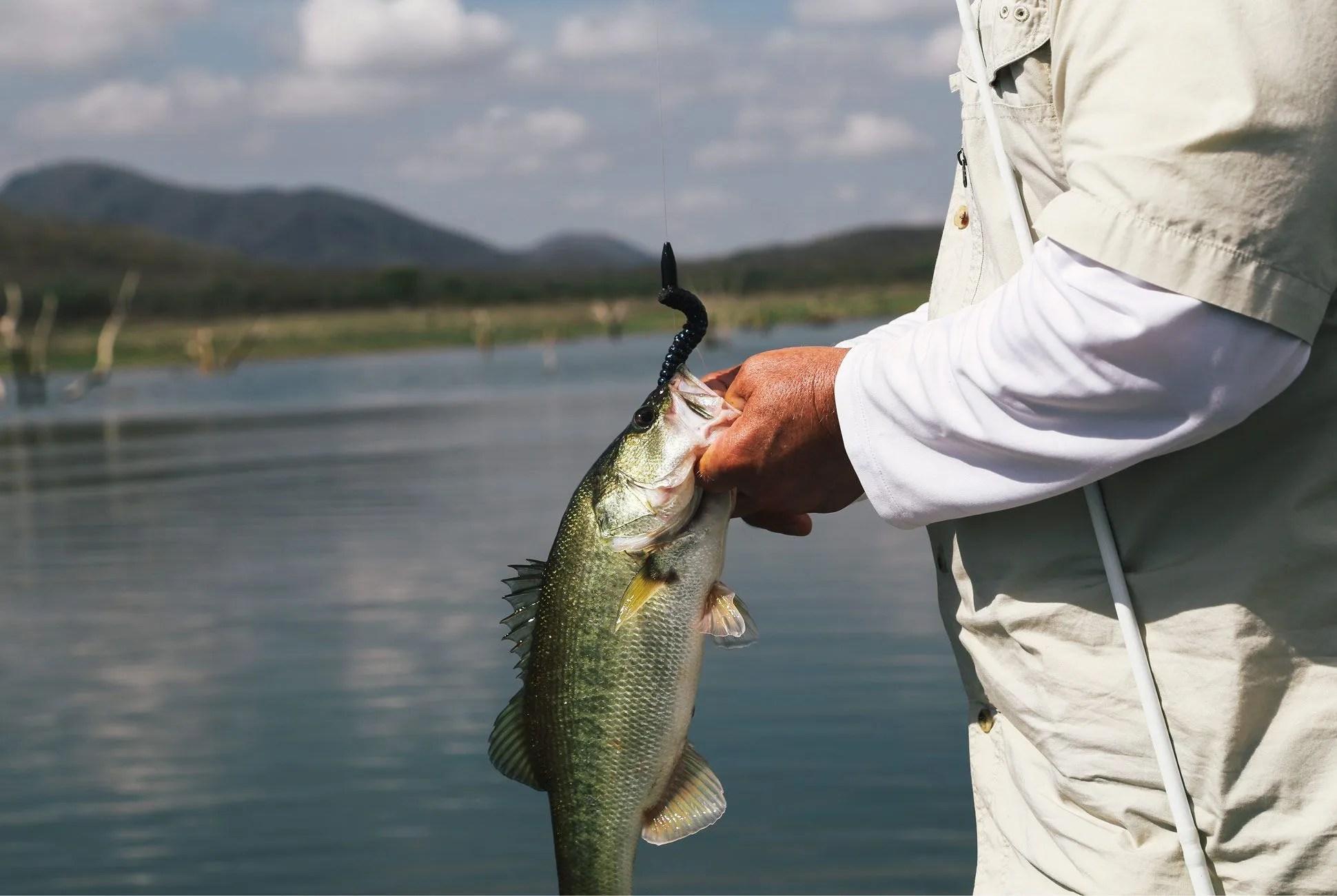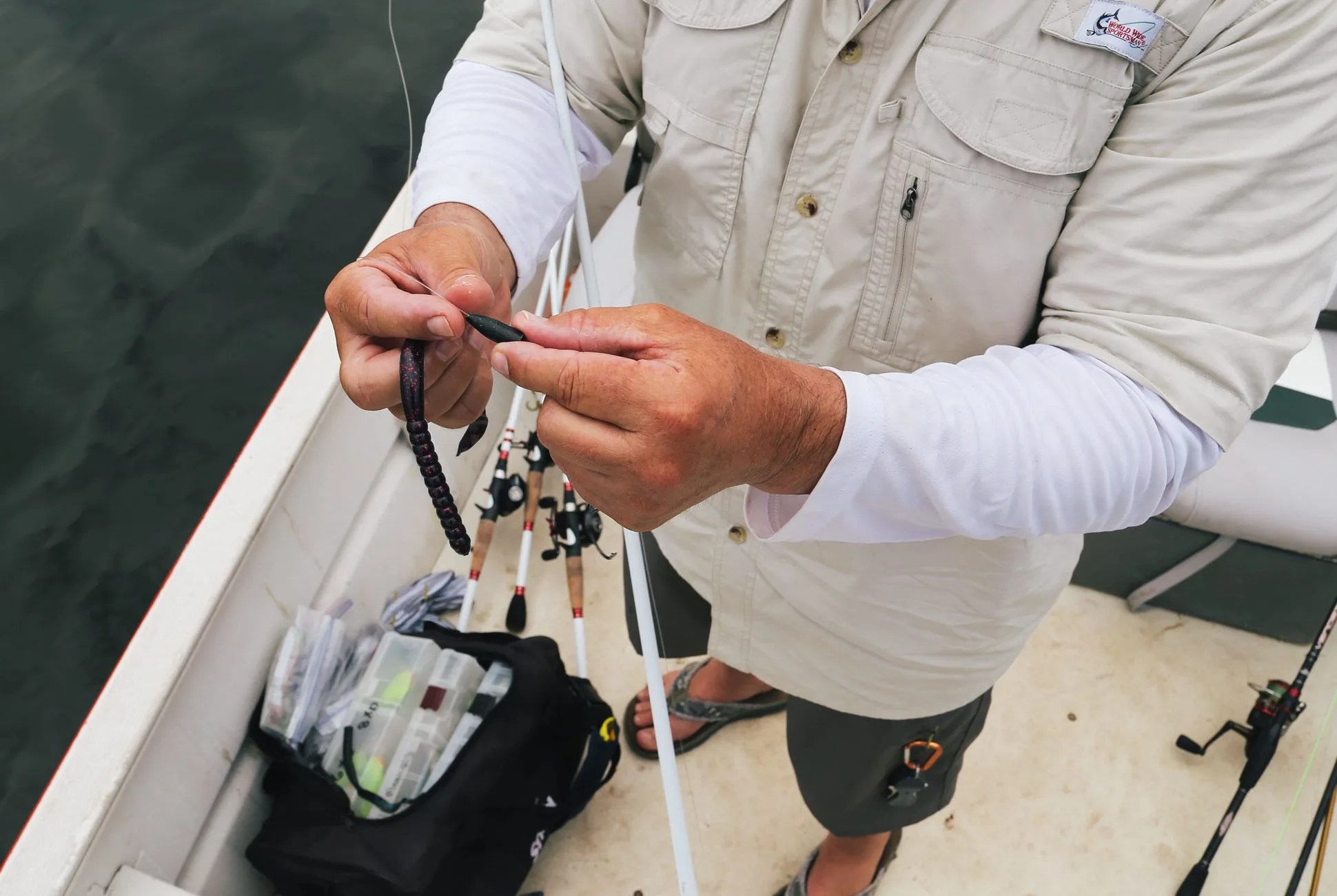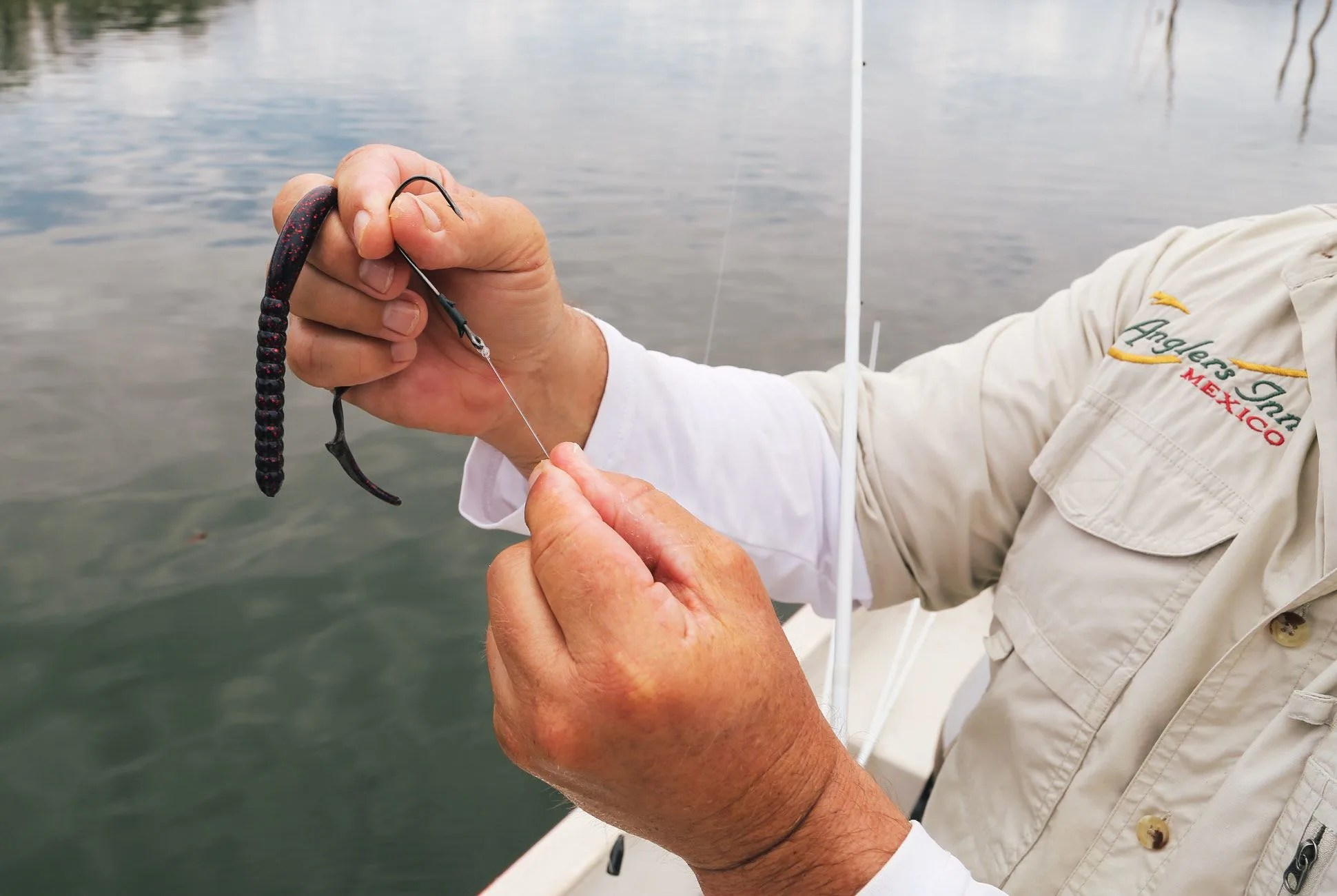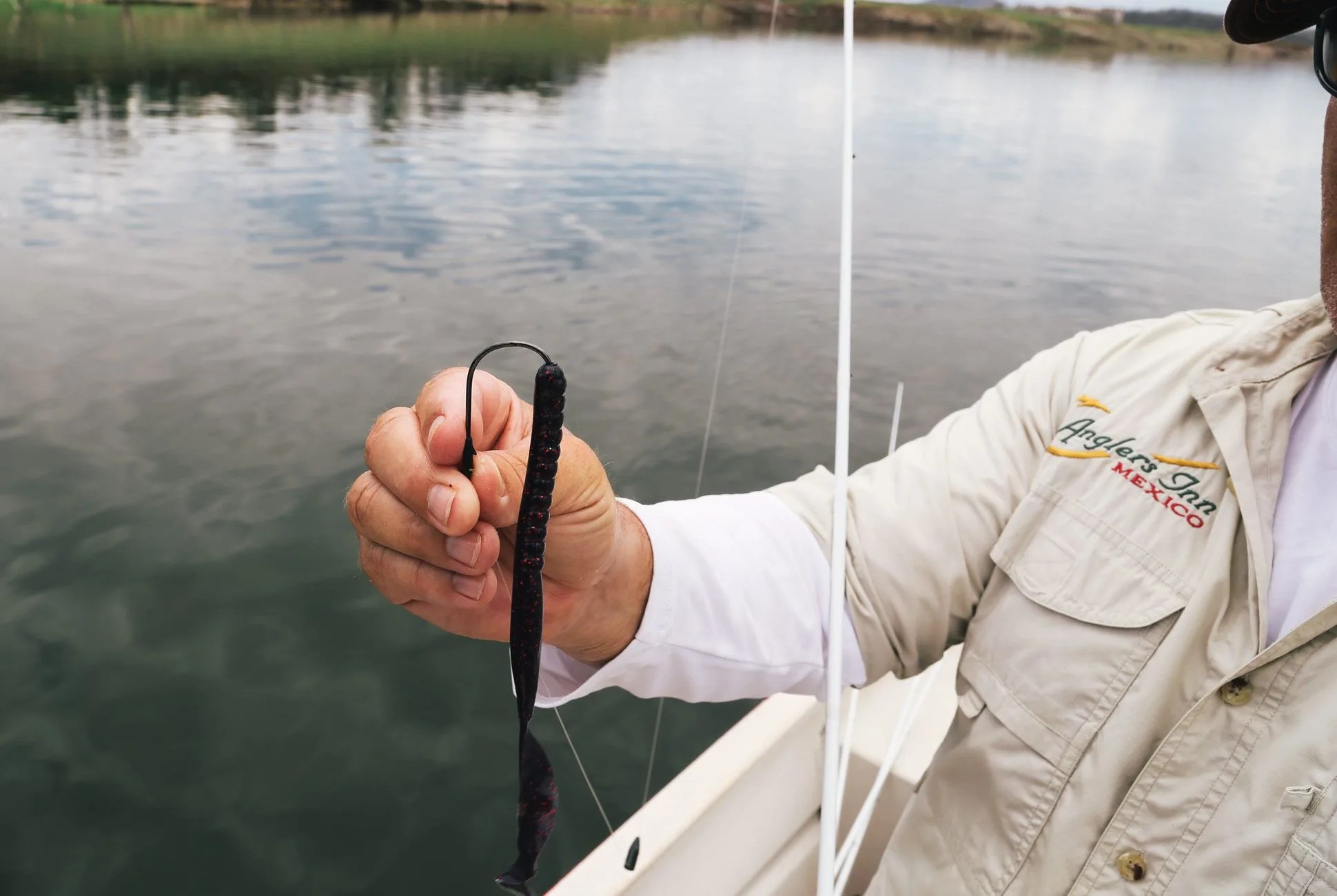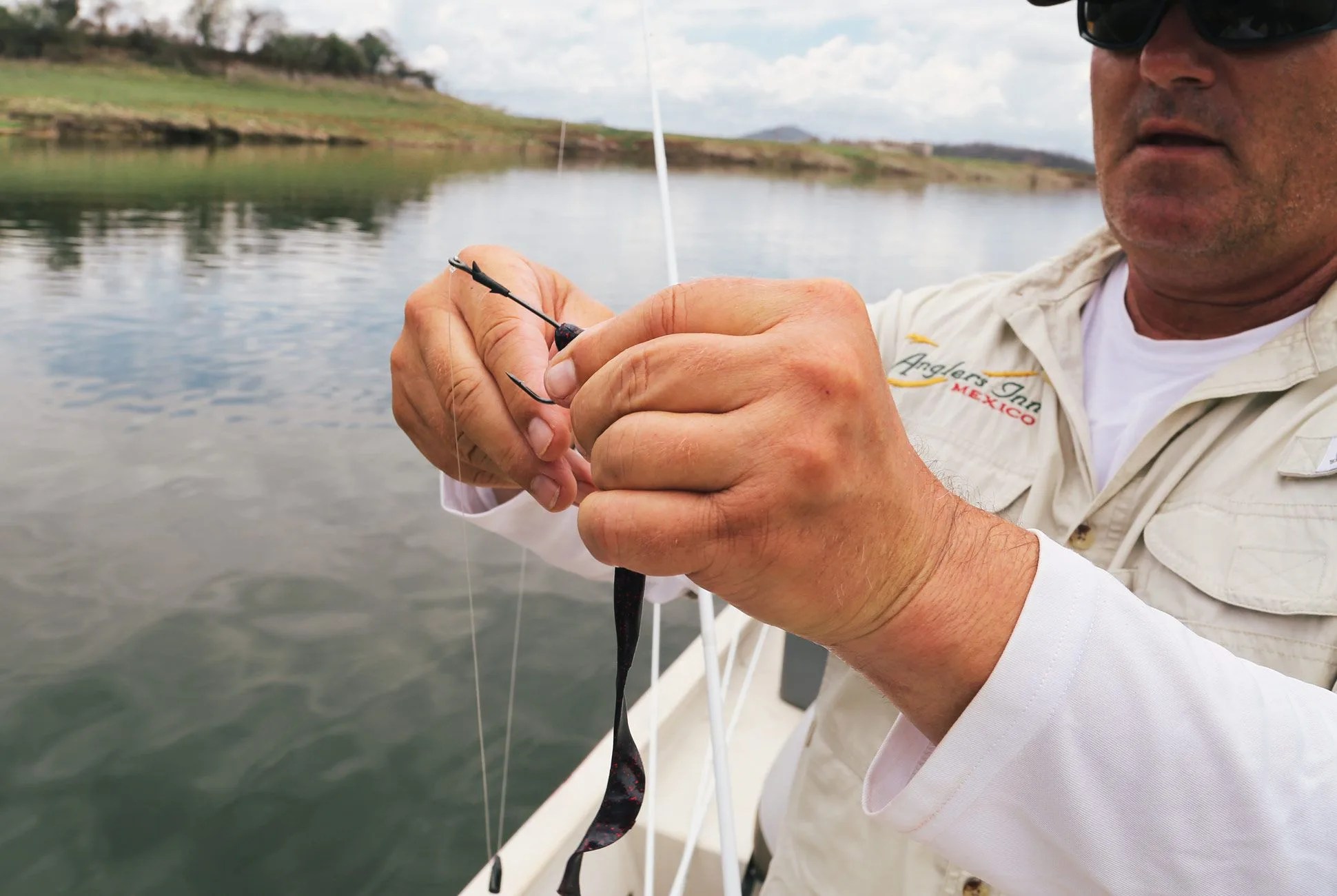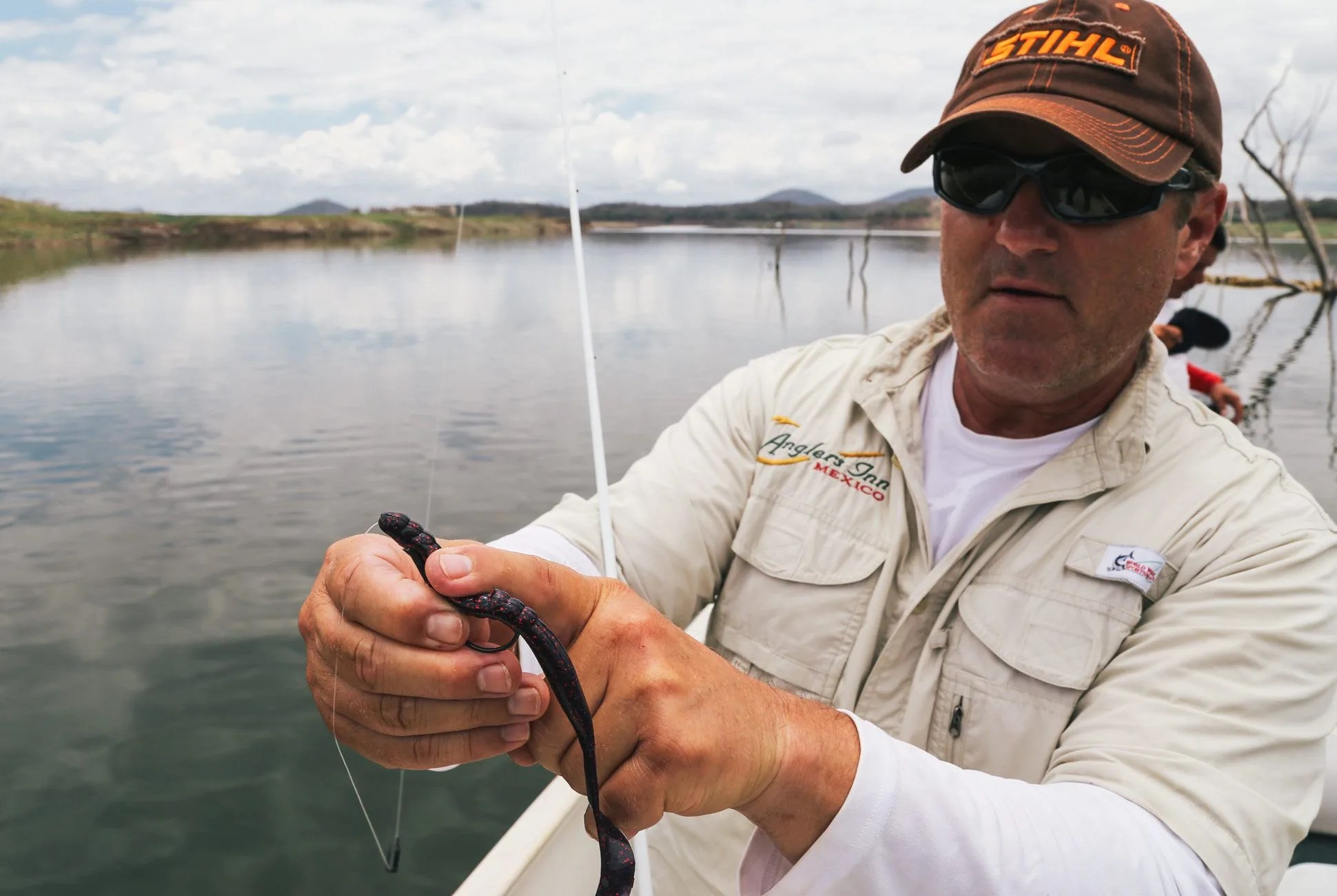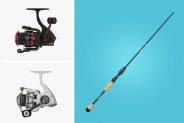“A plastic worm is the most universal bait a fisherman can have in his tacklebox,” said Joe Thomas, former Bassmaster Tournament pro and host of Stihl’s Reel in the Outdoors. He and the other fishermen at Lake El Salto in Mazatlan, Mexico, were only using it one way, though: Texas-rigged.
As opposed to, say, Carolina-rigging a worm, the Texas-style involves using a heavy “bullet” weight at the head of the worm to sink it to the bottom of a lake or pond. Because of its unique hook placement, embedded within the worm’s belly, the fake morsel can then be dragged slowly across the bottom, where big bass like to hang out, without getting snagged on the cover (rocks, trees, weeds) they like to hide in.
In short, the Texas-rigged style is a delivery system to the biggest bass’s homes. But to knock on their door, you need the right setup and techniques. Thomas showed us how.
1. Use the right gear. “It doesn’t matter whether you use braided or fluorocarbon line, or a spinning or bait-casting reel,” Thomas said. But you need to use heavy line because of the weight of the rig — 17—20 pound fluorocarbon, or 40—65 pound braided line. Thomas uses a 7-foot rod with medium-heavy to heavy action, which helps him with the style’s violent hookset technique (more on that later).
2. Rig it. Slide the sinker up the line, then tie on the hook (Thomas uses a palomar knot). “Hooking the worm the right way is the hardest part for most people,” Thomas said. First, push the point of the hook into the nose of the worm. Slide the worm along the bend of the hook until the hook fully protrudes. Continue to move the nose of the worm up the shank of the hook, up and over the “keeper.” Thomas wets the “keeper” of the hook to keep from tearing the worm’s plastic nose. “The key here is you want the nose of the worm to cover the knot,” Thomas said.
Reposition the worm and hook so the hook’s point is facing back into the worm. Where the hook re-enters the worm is key. “I look to see where the hook needs to go in so the worm will hang straight,” Thomas said. “Then I lift the worm up and insert that hook into the worm, and I’ll push all the way through where it starts to go through on the other side. It cuts a channel in the worm. Then I duck it back inside. So now it’s completely weedless [and won’t get snagged on the bottom], but when a bass puts a little bit of pressure, it exposes that hook.”
5 photos
